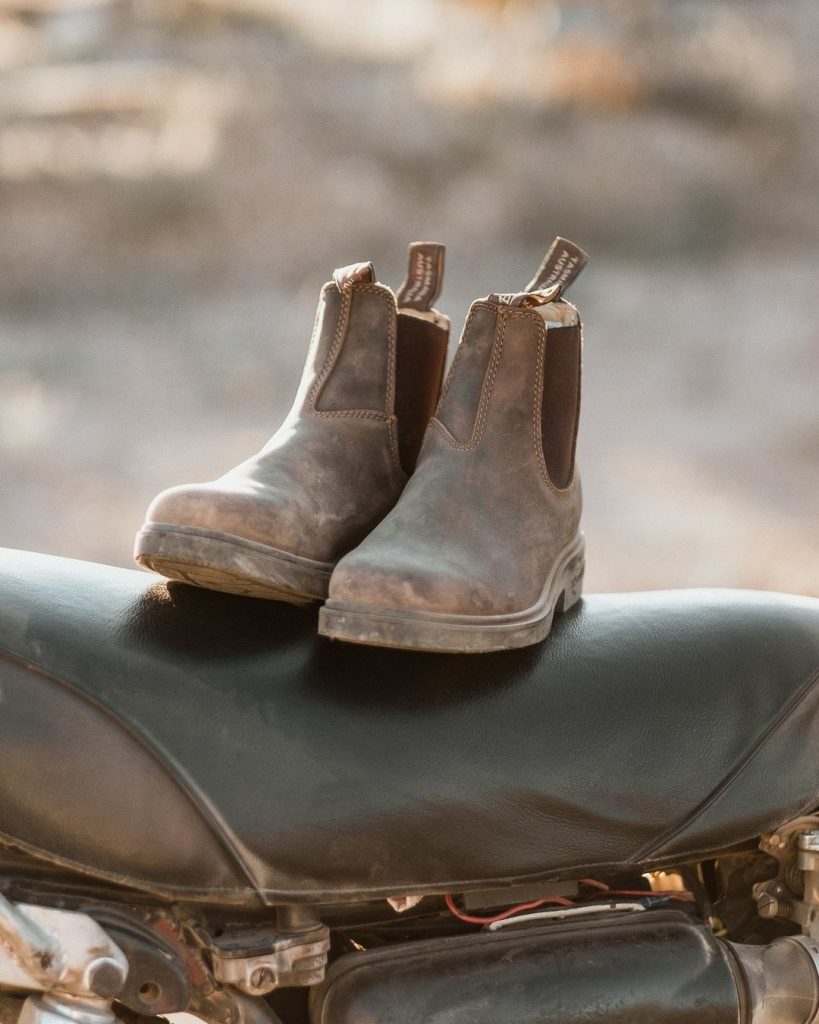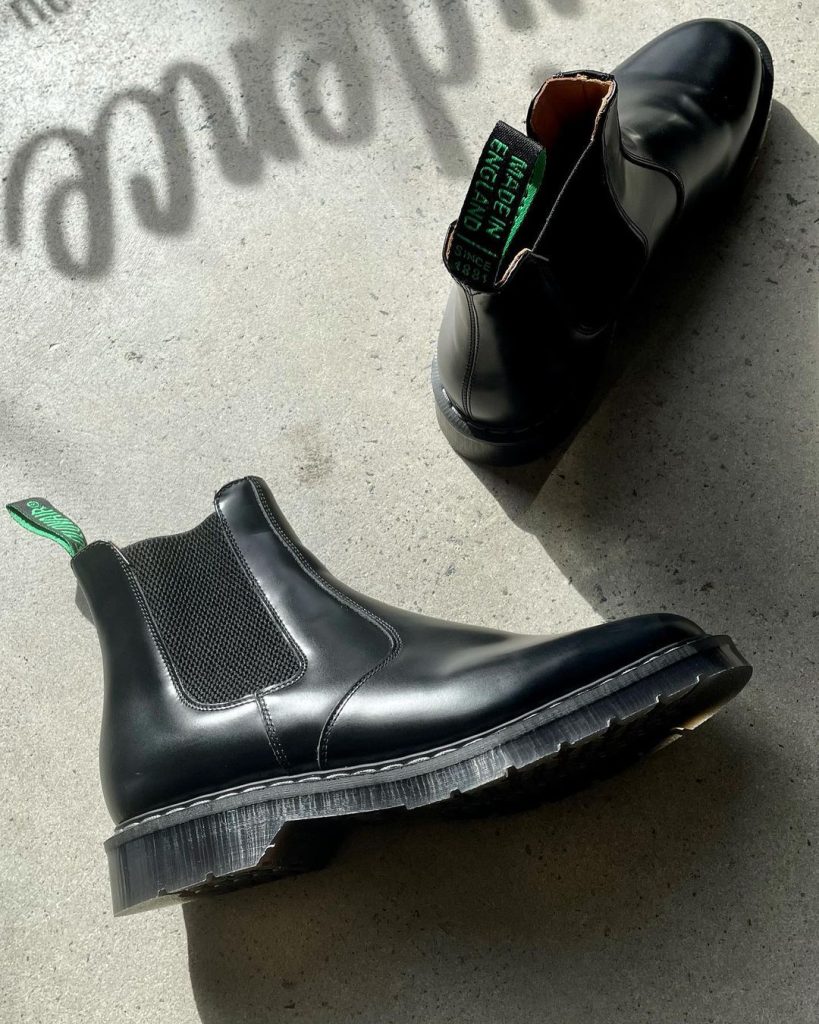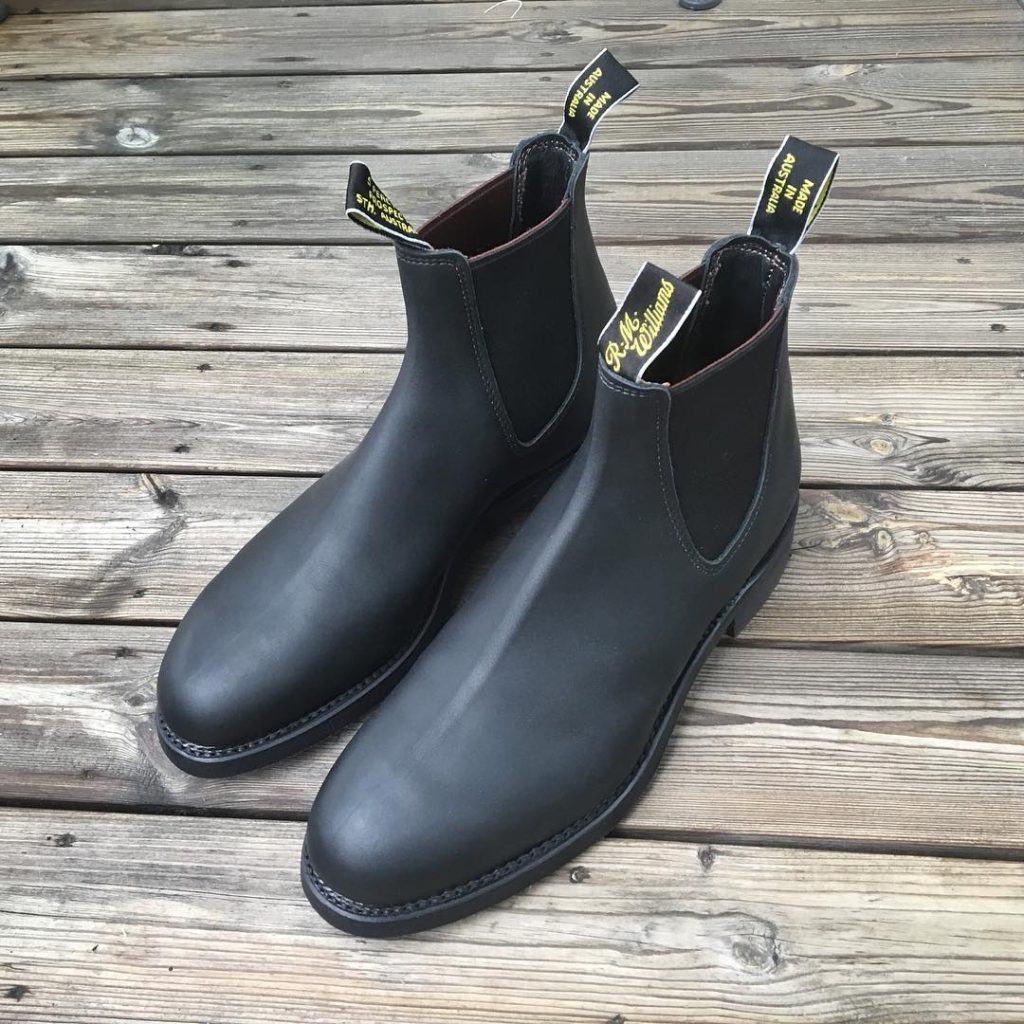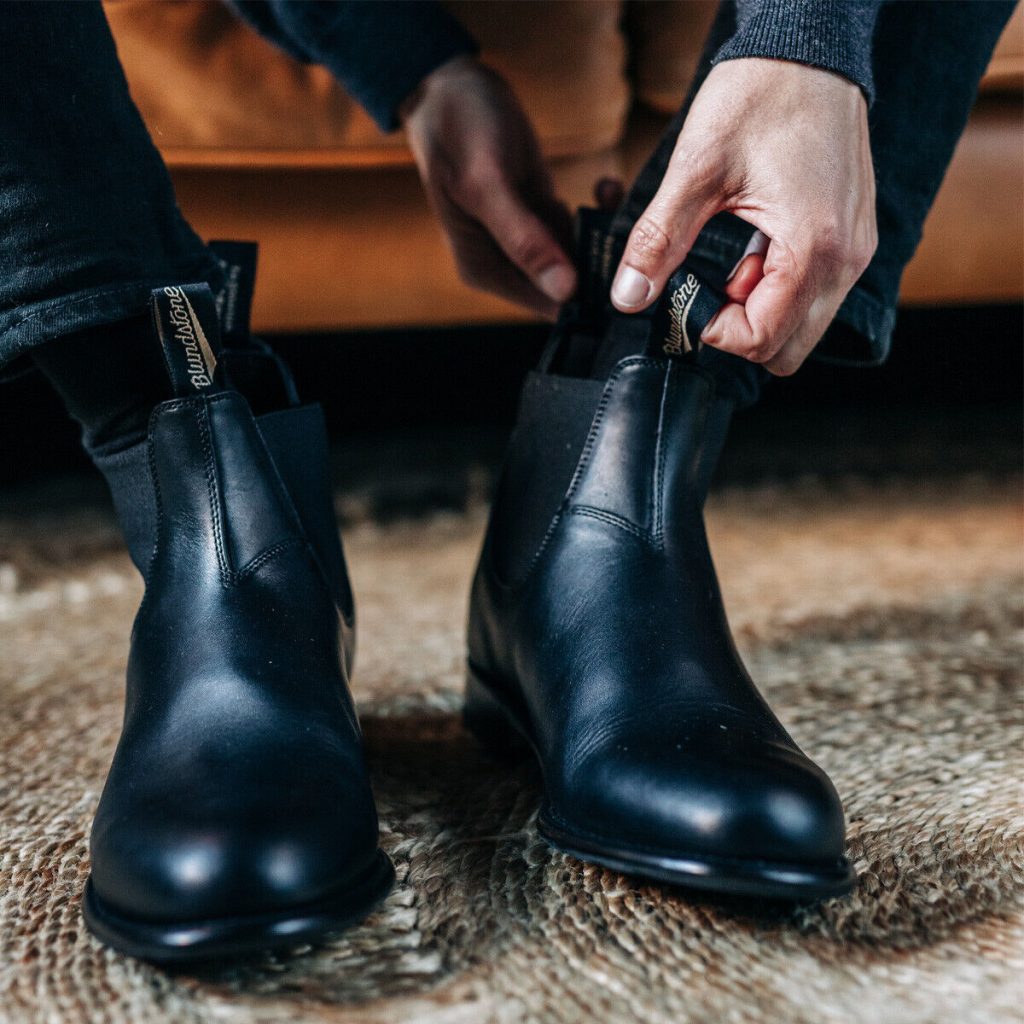
You may have noticed lately that Chelsea boots are having “a moment,” as fashion people like to say. The laceless, ankle-length boots with elasticated gussets have been around since the mid-19th century, when Queen Victoria’s shoemaker made her a pair for walking and horseback riding. The style dipped out of fashion following WWI but came roaring back in the 1960s thanks to the mods and the British invasion, whose suited and booted members were known to hang out on the King’s Road in Chelsea. Groovy baby, yeah! Since the swinging ‘60s, Chelsea boots, make a resurgence every decade or two. And once again, there are herds of them.
For years, I’ve been wearing a square-toe style from Blundstone, known as model #1306. It has everything I personally look for in a Chelsea: dressy enough to wear with a sportcoat, but rugged enough to tromp through mud or snow. A quick wipe down, a bit of Nikwax, and a little buff with a rag, and we are back in business. But lately, my trusty pair of “crazy horse” Blundstones have been looking tired indeed. The elastic sides are frayed (I’ve tried snipping and even burning the edges), the toes deeply scuffed, and the heels visibly worn down. And because Blundstones’ cushy soles are glued on, most cobblers refuse to resole them. It is time to put these boots out to pasture.
In the intervening years since I picked up my favorite pair of Chelseas, it seems they’ve gotten very popular, and I’m a little put out. At a recent dinner party, one guest almost walked out wearing another’s black round-toe blunnies–luckily, my pair was too beat up to get confused with the others. The death knell came for me when Max Berlinger called Blundstones “the defining style of the early 2020s” in an article for the New York Times—a sure sign that they had reached pique ubiquity. So I began to do a little searching online for a replacement pair.
But I had a lot of criteria. Ideally, I wanted to spend less than $500, which ruled out Trickers, Husbands, Churches, and Crockett and Jones. And there were some aesthetic issues I wanted to avoid. After meeting up with a friend who was wearing a pair of Prada Chelsea boots with elongated toes, I couldn’t shake the idea that they looked a little phallic.

So I decided to check out something more hard-wearing, an old-school British brand based out of Northampton, called Solovair. The company’s styling is almost identical to Dr. Martens, but the pull tab on the back of their shoes is green, and the leather is less plastic-y. Most importantly, the rubber lug soles are Goodyear welted, which means when the soles wear down, I can put on new ones. Solovair only makes one style of Chelsea called the Dealer Boot—which comes in a variety of colors and finishes—from shiny black to rugged scotch grain in a medium brown. They’re chunky without being full-on Bottega stompers, and the slightly upturned toe makes them seem like they’re already in motion. I thought they’d pair beautifully with jeans and a chore coat or a blouson, but they might look out of place peaking out beneath a pair of gray flannels. And in a college town like Cambridge, where Blundstones and Dr. Martens are everywhere, were the Solovairs were a little samey? My search continued.

On eBay, I found a pair of black, RM Williams (Gardener model) that seemed like a perfect match. Made in Australia of a single cut of leather, these boots were slick but still rugged enough to actually live in—at home with a Barbour or a suit–or maybe both at the same time a la Anglo-Italian’s Jake Grantham! And since they were pre-owned, I could actually afford these shoes and I wouldn’t have to baby them. But when they arrived, I found the boots were a bit too large; with my insoles added, they were a smidge too tight. Because Chelsea boots are laceless, you don’t have much room for adjustments. Reluctantly, I sent them back.

A few new, direct-to-consumer brands have caught my eye. Maybe the Chelsea market just needed to be disrupted? My first thought was Spanish brand Morjas, who makes a very shapely Chelsea, but shipping to the UK (where I currently live) would mean incurring both VAT and customs from His Majesty. I also took a look at Thursday Boots, who have a good reputation on Styleforum for quality construction. They come in a wide range of styles and materials, but there’s something a little too macho about their marketing, with names like: “The Cavalier,” “The Duke,” and “The Legend.” Rakoh, an American startup making their boots outside Florence, also popped up on my radar. (Full disclosure: they sent me a pair in espresso brown, which I’ve been wearing for the past few days). The styling is on point–almond toe, medium heel–and they are by far the lightest Chelsea boots I’ve tried on. But I began to feel that they were a bit too nice for my purposes, not the sort of shoe I’d want to have to wipe dog crap off after a walk in the park with my collie. In my 30’s, I’m confronting the fact that my lifestyle is less like Keith Richards’ and more like Queen Victoria’s, and I need a Chelsea boot to match.
In the end, I gave up and settled on buying another pair of square-toed Blundstones in the same color as the pair I had. If it ain’t broke … But then I discovered that Blundstone has come out with a fancier version of the “dress” Chelsea. Part of their so-called heritage collection, the model #152 is sleeker than its chubbier, round-toe cousin, and even has a Goodyear welted rubber sole. This was it, my ideal Chelsea boot, perfect for any occasion or type of weather, and under budget. Now if only it came in brown.







